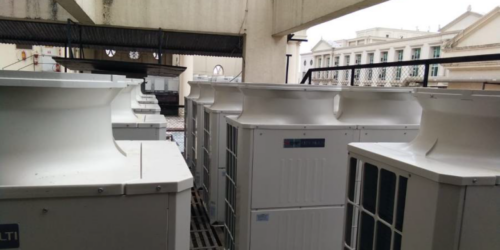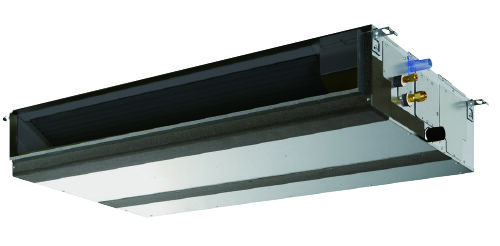Comfort Air conditioning basics
Comfort Air conditioning
Comfort air conditioning for work place has the objective of providing, thermal comfort and Indoor air quality. Both these are part of a wider term which is Indoor Environment Quality which also has Indoor Lighting Quality and Indoor Acoustics included in it.
The topic dealing in thermal comfort and Indoor air quality is a part of Heating Ventilation and Air Conditioning, which abbreviates to the HVAC
Below is an effort to explain the basic concept of air conditioning from requirement to its system development.
Thermal comfort is a combination of the following parameters
- Dry Bulb Temperature
- Relative Humidity
- Air Draft and Room air velocity.
- Mean Radiant Temperature
Hence measurement of any of the above individually is not going to assure the degree of thermal comfort and it has to be collectively interpreted. Measurement and tabulating of all known parameters are not always practical as well. Following good practices in the initial phase of selection of HVAC system is the best way of assuring optimum thermal comfort. The art of HVAC is on ensuring maximum of the work places within the comfortable range, which is combination of the above.
Dry Bulb temperature can be measured with thermometer. An average digital thermometer will cost about INR 500/- in India
Humidity can be calculated by taking wet bulb and dry bulb thermometer (psychrometer). An average psychrometer will cost approx. INR 1000/- in India
Indoor Air Quality is related to the composition of air that is required for healthy living
- Maintain natural composition of fresh air
- Keep Carbon dioxide, Carbon Monoxide, Volatile Organic Compounds and various such gaseous components within limits
- Reduce or eliminate bacteria, virus, fungi, aerosols, dust particles etc.
Indoor Air Quality is enhanced by,
- Use of Air Filters (Mechanical, Chemical and Electrostatic)
- Inducing Outside air through the air conditioning system.
Air Conditioning Process:
We may need to do following things with air
- Add Heat (Heating)
- Remove Heat (Cooling)
- Adding moisture (humidification)
- Removing moisture (dehumidification)
- Impart motion to the air (Air flow)
- Remove dust particles (filtration)
- Add clean out door air and remove contaminated indoor air (Ventilation)
All these can be achieved partly or fully through a device which we will now generally term as an Air Handling Unit or an AHU, though by the term AHU, an equipment with a more precise application is intended.
Hence an AHU will have some or all of the below components:
Heating section to heat the air –
- An electric heating coil or steam/hot water coil in an air flow path
Cooling section to remove heat from air –
- A Chilled chilled water coil in case of chilled water system
- A closed coil in which liquid refrigerant continuously evaporates absorbing heat from the outer surface.
Humidifier to add moisture from air-
- Steam generator
Dehumidifier to remove moisture-
- Cooling section itself if it can reduce temperature of the air below the dew point
- Desiccant media that absorb moisture
Fan to Induce Air Flow such as –
- Propeller fans
- Centrifugal fans
- Axial fans
Air Filtration Section to remove dust particles –
- Mechanical filtration to remove particulate matter such as dust, pollen, bacteria, virus etc.
- Electrostatic Precipitation units to remove very fine particles by creating electric charges and ionising
- Fumes, dissolved gases and odour filtration through adsorption or chemical dissolution.
Fresh air vent with or with out a fan to induce fresh air-
- Fresh Air Unit with inlet control
- Treated Fresh Air Units to separately cool, dehumidify and directly supply to conditioned area
Thus, summarising the basic need of maintaining indoor environment and the systems used. We shall try to get in to details of each of them in other posts

